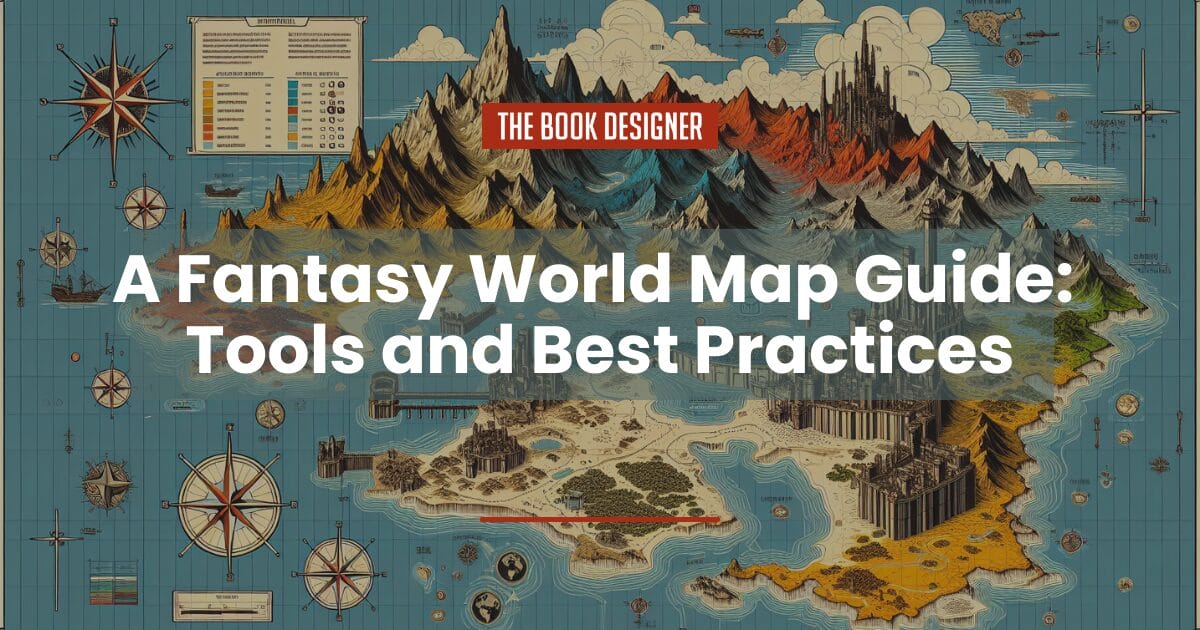Creating a fantasy world map is an important step for many authors writing fantasy or other speculative fiction. A map does more than just show the places in your story; it gives you, the author, a way to further develop the world of your story and characters. And if you choose to include it in your final book, it can pull readers into your world, helping them see the adventure as they follow your characters.
Crafting a fantasy map is not just about drawing lines and naming towns; your map should reflect the culture, history, and landscapes of your world in a way that helps you write and later helps readers understand the world of your story.
Since self-publishing gives you more control over your book and lets you interact directly with your readers, your map can also be a great tool for marketing. It offers a glimpse of your fantasy world and can be shared on different platforms to catch the interest of new readers even before they read the first page.
Here’s what you need to know about creating a fantasy world map for your novel:
What is a fantasy world map?
Fantasy world maps are visual representations of the world in which a fantasy novel takes place. Some are incredibly detailed, while others give only a basic overview of the landscape and any major landmarks featured in the narrative.
There are two main audiences for fantasy world maps: the author of the book and the readers of the book. Some authors create maps for their own reference while writing, and others create maps so readers better understand the geography of the novel they’re reading (some authors do both).
How are fantasy maps used in worldbuilding?
When building a fantasy world, there can be a lot to keep track of. Maps help authors think about more than just the physical geography of the natural world. They also encourage authors to explore:
- The world’s climate and weather. Is it uniform across the world, or are there regions with different weather patterns? Are their seasons? What challenges does the climate present to its inhabitants?
- Natural resources and where they’re located. Are there important mines? Water sources? Agricultural land? Having an idea of where a world’s natural resources exist can greatly influence a narrative.
- Settlements. Where are the villages, towns, and cities located? What is the population (and population density) of those settlements? Do many people live in between them?
- Political boundaries. Is there one government that rules over the whole world? Are there many small governments? Two or more warring factions?
- The distance between places. This can be important if anyone in the story does any traveling, as the author needs to know whether it would take a day, a week, a month, or longer to get from point A to point B.
Mapping out these factors and how they relate to one another can be an incredibly helpful resource for authors as they write and for readers as they read a novel.
What are the different types of worldbuilding maps?
There are a lot of different types of world-building maps out there. Some combine many of these attributes while others focus on only one.
Boundary maps
Boundary maps show the borders of cities, towns, countries, or regions within your fantasy world. These kinds of maps are particularly important if there are major cultural differences between places, or if there are disputes between them.
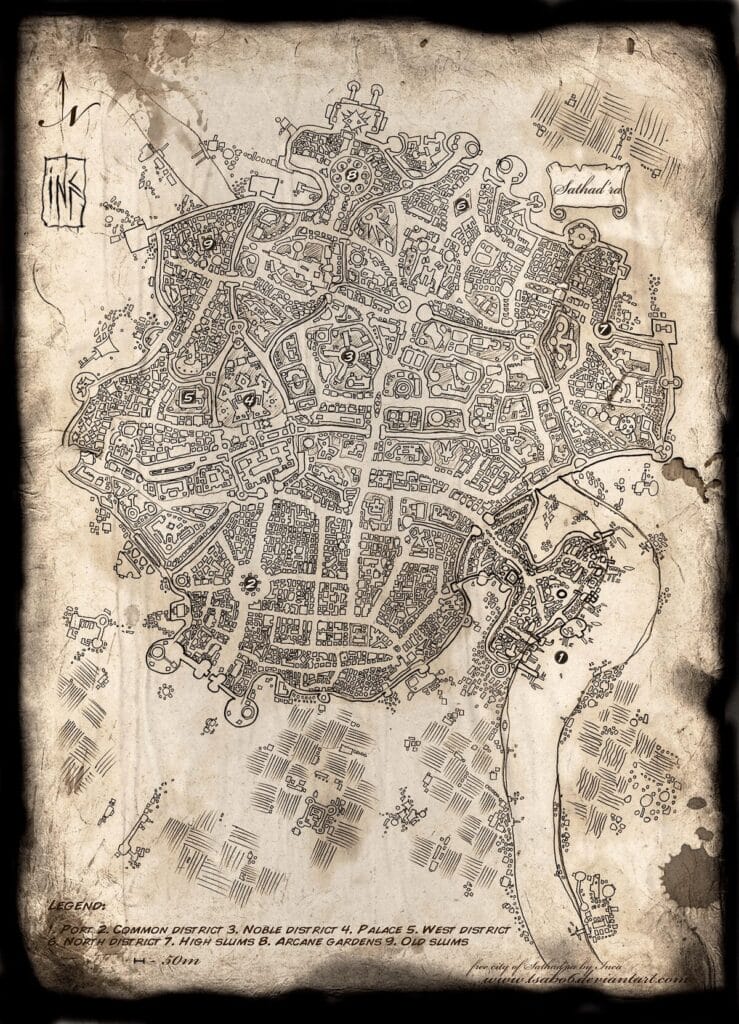
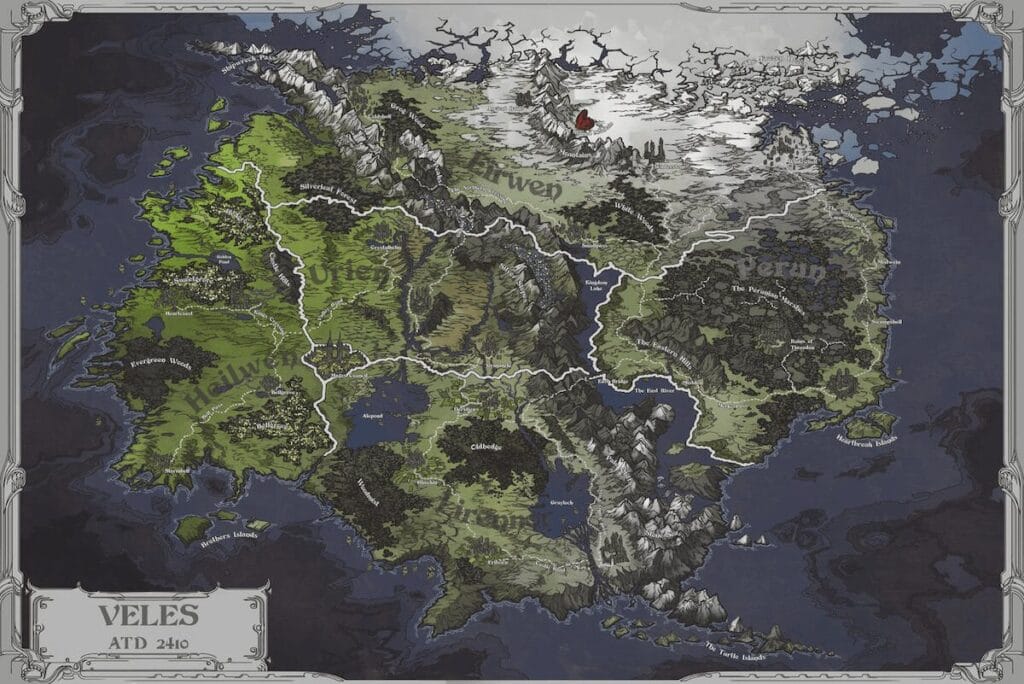
Climate maps
Climate maps show the typical weather conditions and patterns within different regions of your world. Consider different types of climates and biomes in the real world, such as deserts, tundra, temperate forests, rainforests, tropical and subtropical regions, glaciers, etc.
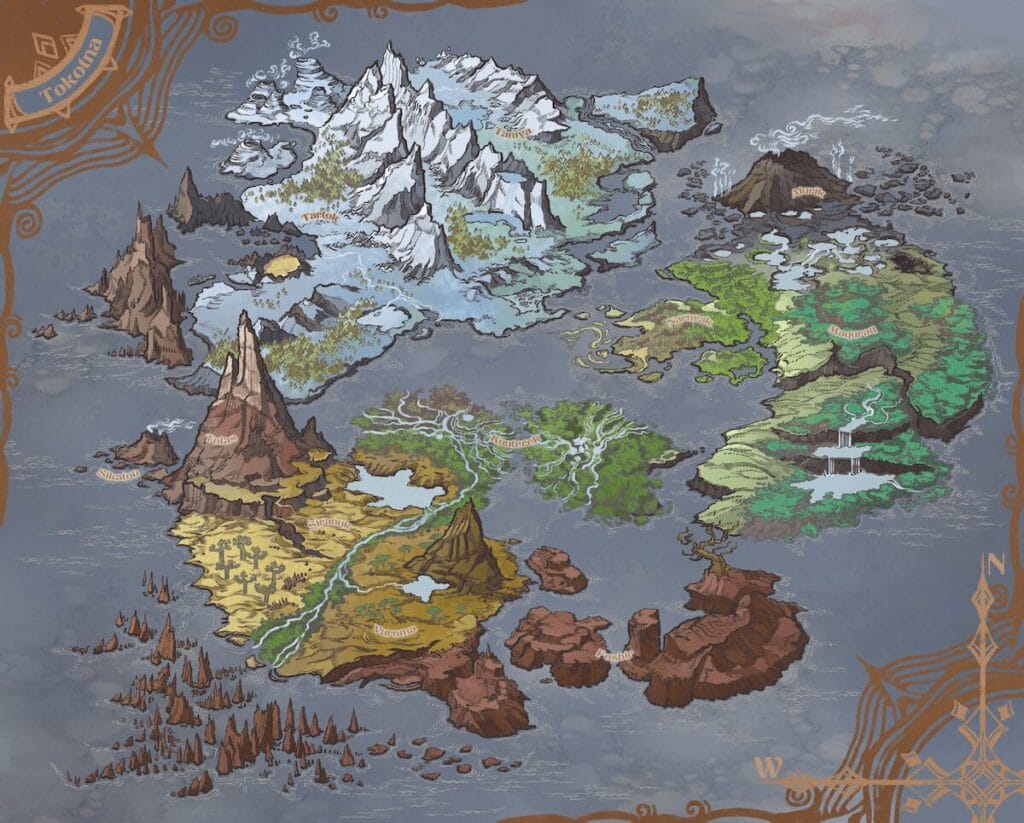
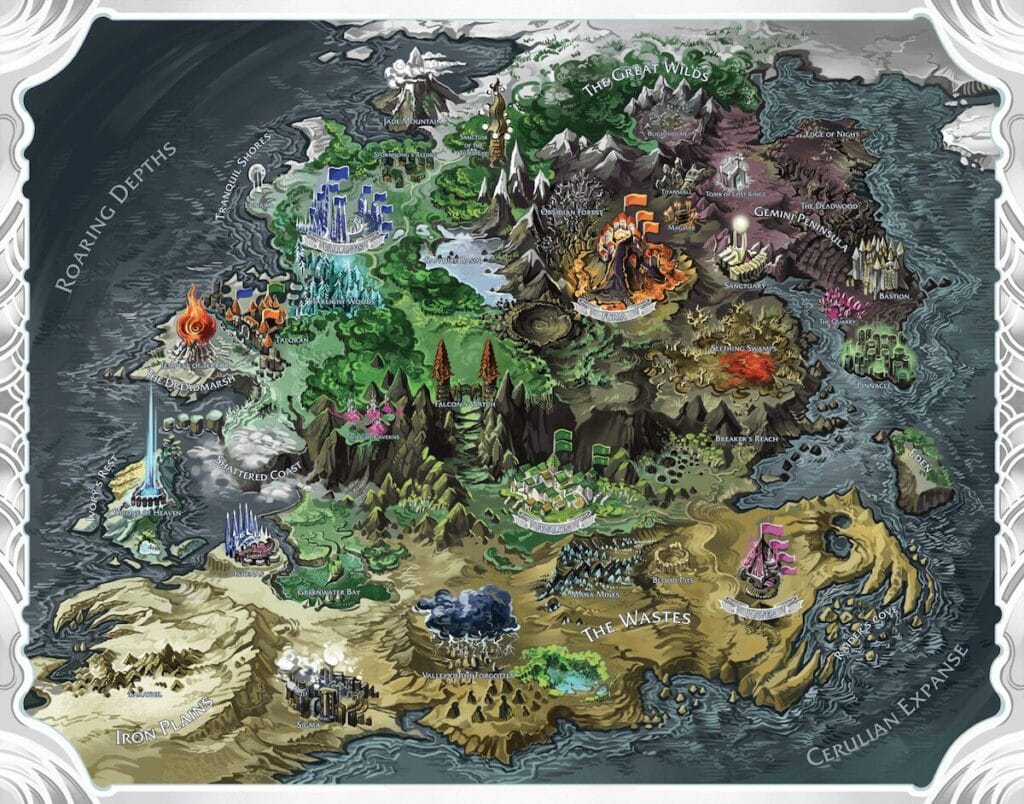
Cultural maps
Cultural maps are similar to boundary maps but are focused more on the cultures of the people who live within each region rather than geopolitical boundaries. They may showcase the languages, religions, and/or history of each place on the map.
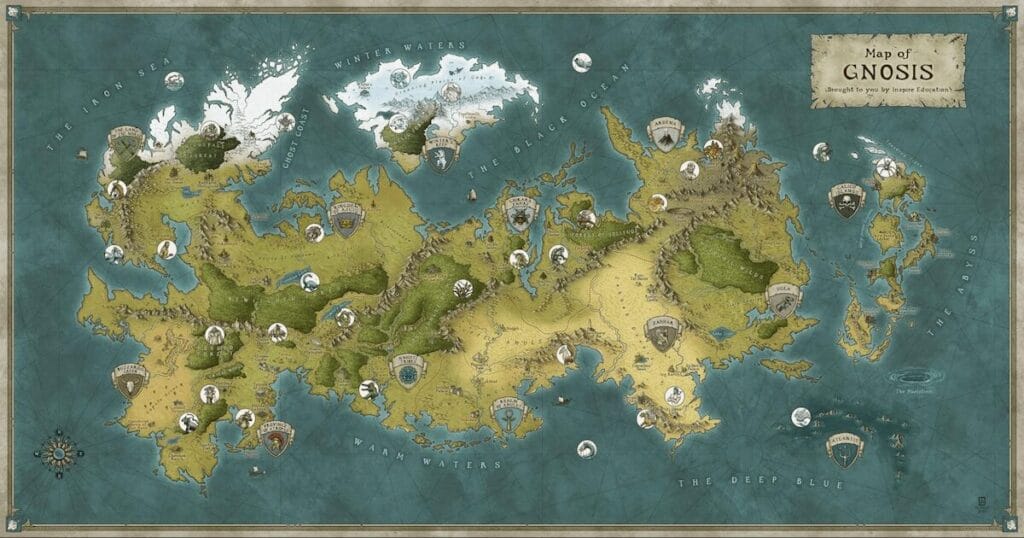
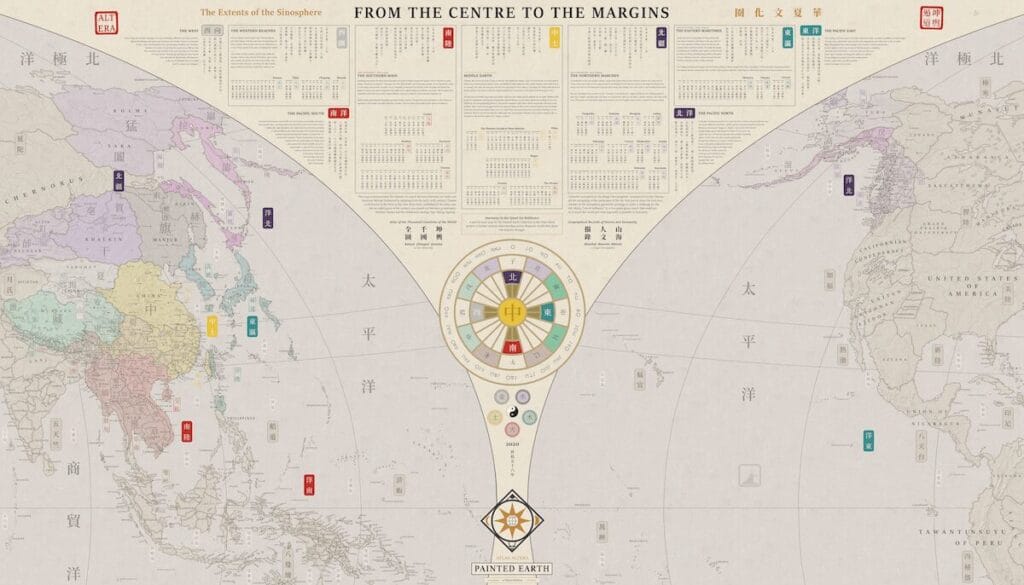
Geographical maps
Geographical maps show the natural landscape. They include things like mountain ranges, lakes, rivers, oceans, deserts, forests, and other natural features.
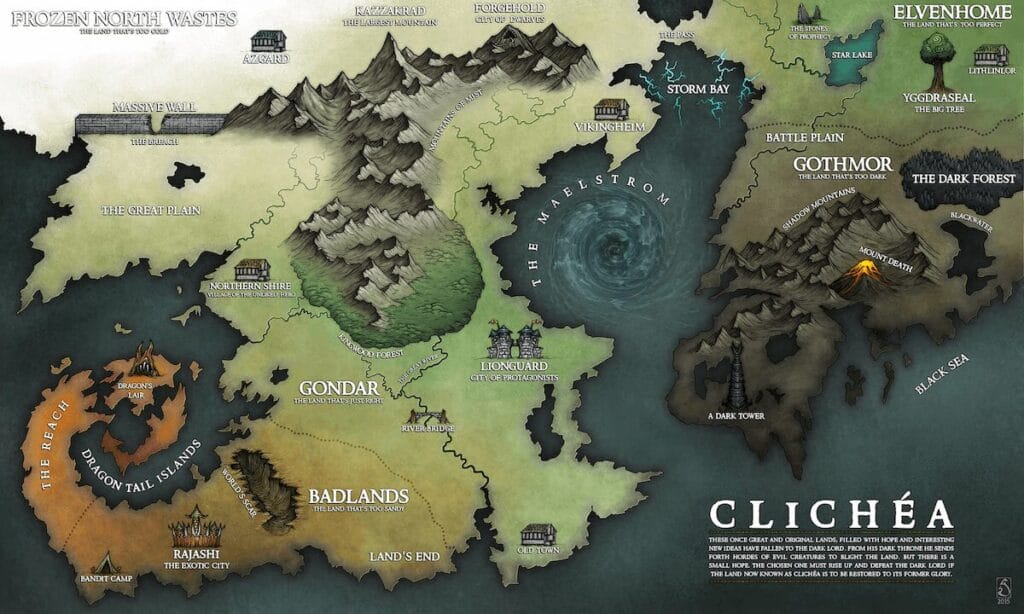
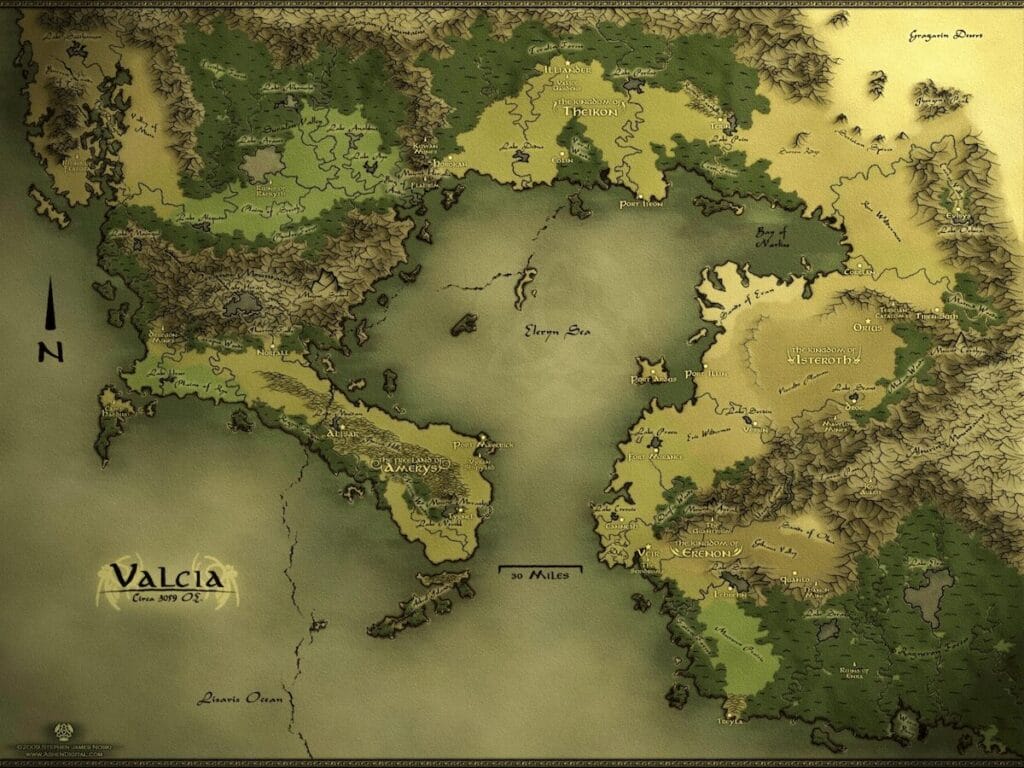
Maps of fictional organizations or empires
Governments aren’t the only important organizations in some fantasy worlds. Showing the influence of different organizations—such as a trade group, organized crime syndicate, etc.—can add much-needed context within a world. There may also be governments that have formed empires, ruling over more than one region, country, or city.
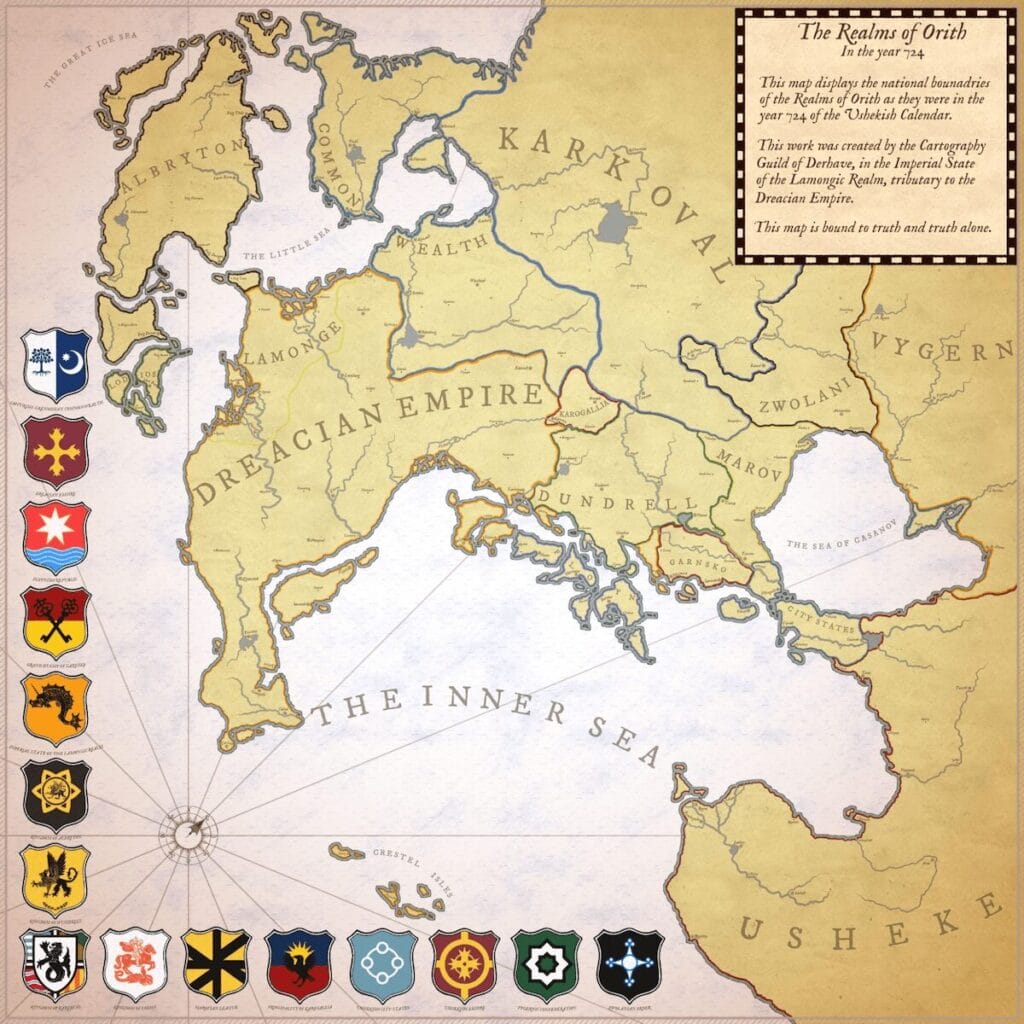
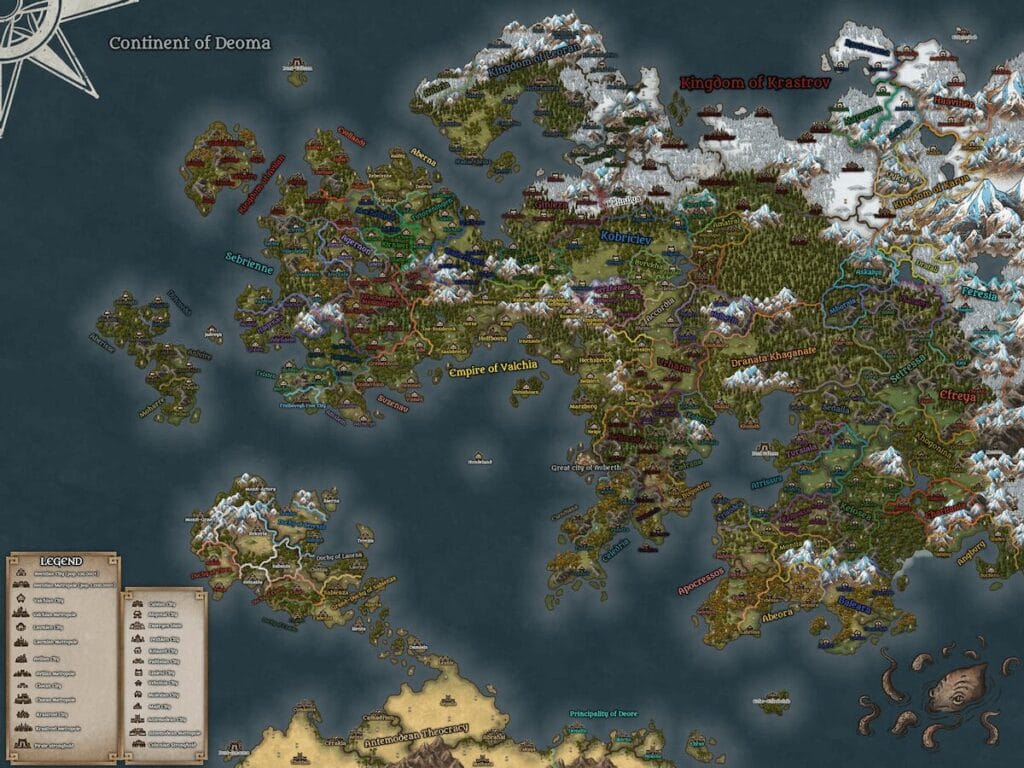
Resource maps
Resource maps highlight the natural or other resources in your fantasy world. They may include water, minerals, agricultural land, or other features.
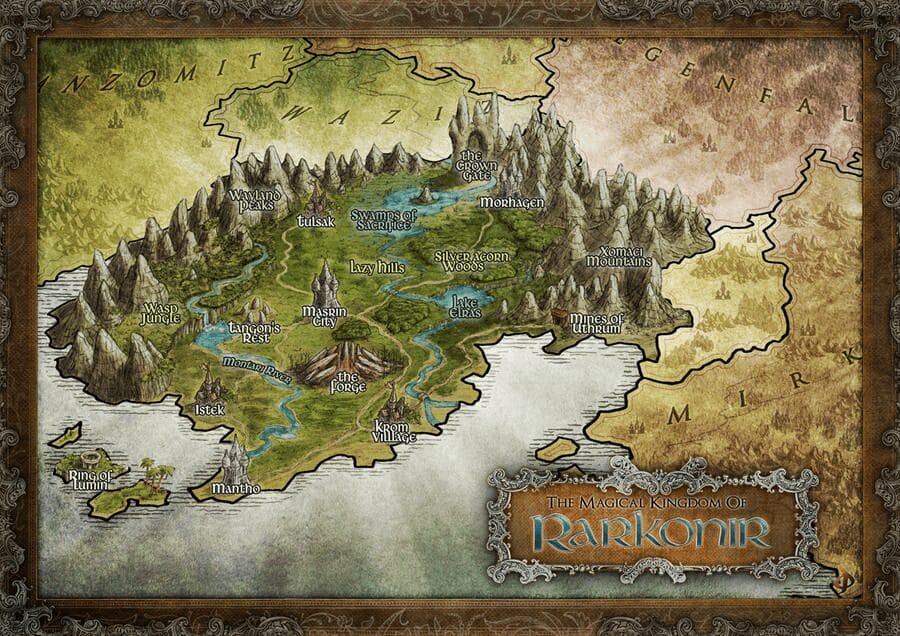
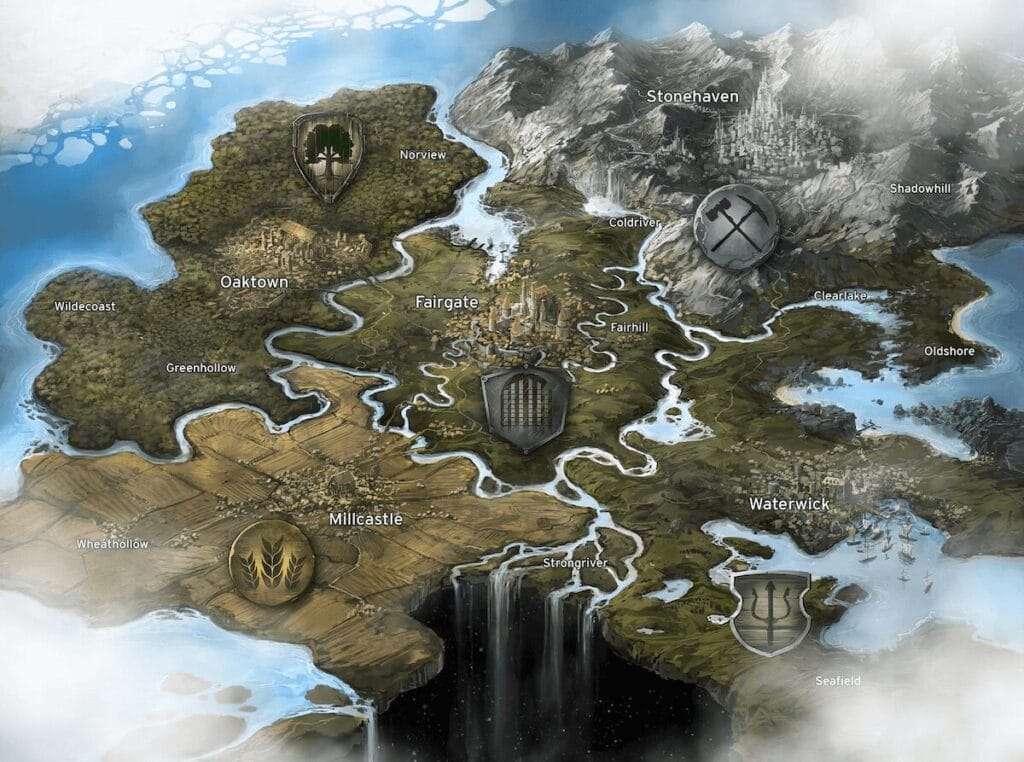
Topographical maps
Topographical maps show the elevation of features within your world. They show how high your mountains are and how low your valleys are.
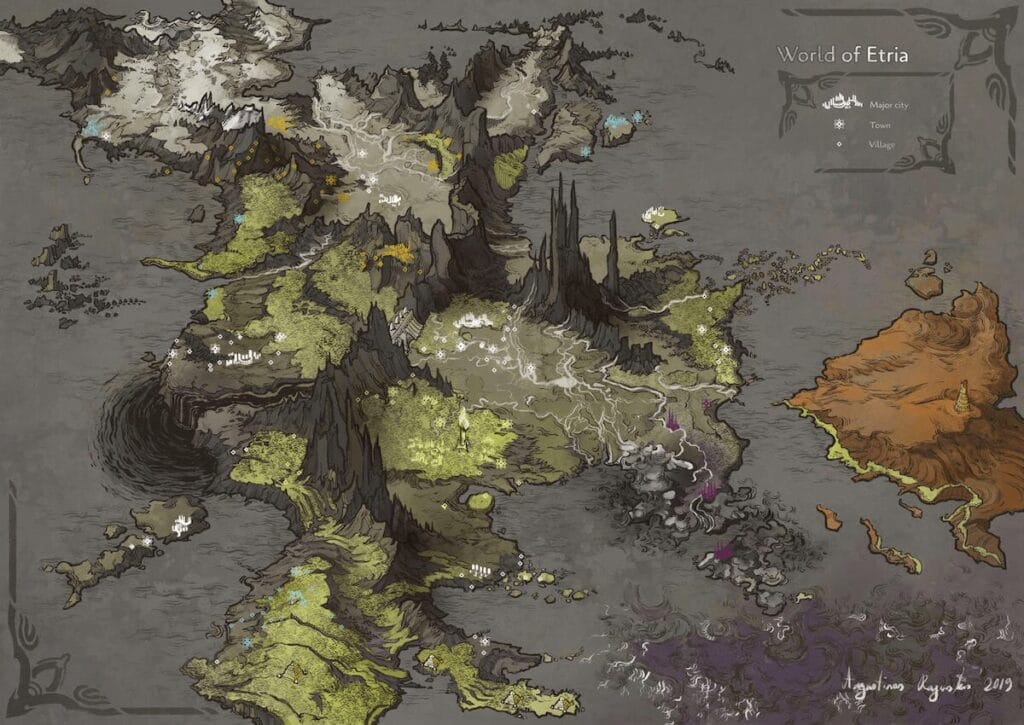
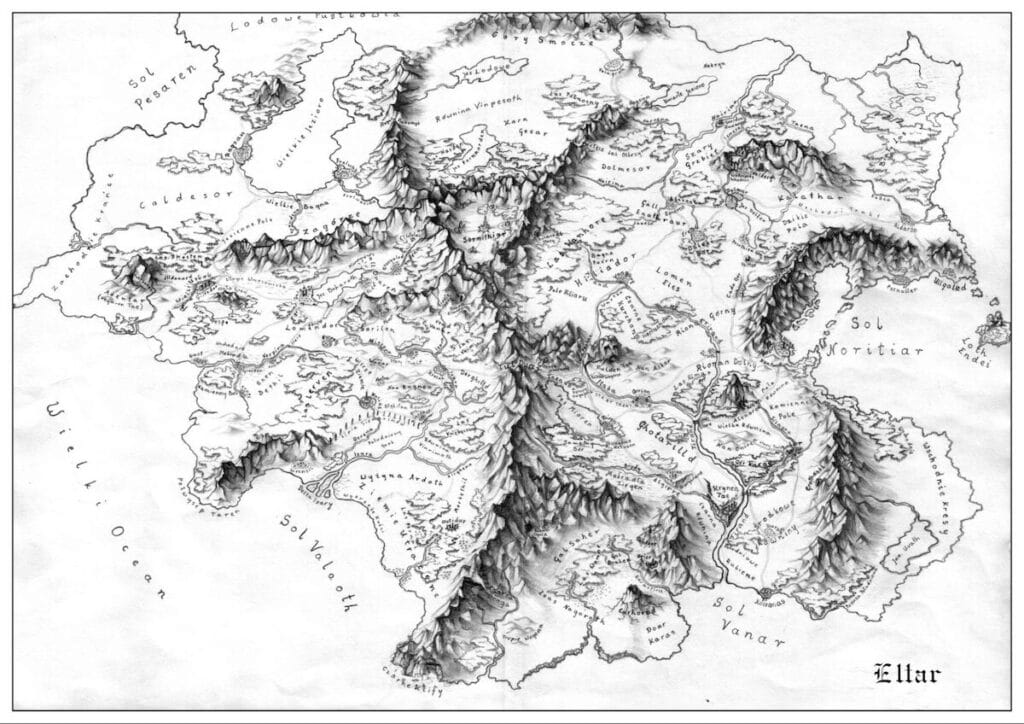
Tools for creating fantasy world maps
Inkarnate offers both free and paid versions of its fantasy world map generator. Use it to create world maps, regional maps, city maps, battle maps, interior maps, and even sci-fi maps.
Wonderdraft is a paid map generator that has tools for creating realistic landmasses, drawing rivers and roads, painting trees and mountains, and more. Wonderdraft costs $29.99, though the output is professional enough you could include it in your published book.
HexTML is a free hex-based map generator that lets you create a very basic outline of your world’s terrain, with a variety of brushes for different terrain features. If all you need is a general idea of where things are located, it’s an excellent free option.
MapForge is another premium map generator that lets you create detailed maps of your fantasy world. There’s a free demo you can use (it only puts out low-resolution maps without an upgrade), and the full version costs $39.
Azgaar is a free, browser-based map generator that’s both easy to use and creates visually attractive maps. The downside is that it auto-generates your map each time you refresh the page, but this can be a great inspirational starting point if you’re unsure of what your fantasy world needs to look like.
Fantasy Map Assets is a great resource if you want to design your world from scratch but don’t want to spend a lot of time drawing each individual feature. They offer bundles of assets based on various themes (including both manmade and natural features), starting at around $10.
Cartography Assets is another great resource for mapmaking design assets you can download, with resources grouped by theme. Their bundles start at around $2.50.
The Book Designer’s Fantasy Map Generator lets you plug in a number of different criteria for your map (including geographical features, cultural features, level of detail, important places, and more) and then creates a map for you.
For more fantasy world map generators, check out the 16 Best Fantasy Map Generator Tools.
Pros and cons of using a map generator
While some authors prefer to draw their own maps on paper (or digitally), map generators are available that can speed up the process of building a fantasy world map. They have their pros and cons, though.
On the pro side, these tools can make generating a map a lot faster than drawing one out by hand. They may also include features you haven’t thought of, which can add depth and additional meaning to your world.
On the con side, fantasy world map tools can be limiting in what features they allow you to implement, especially if your world has wholly unique features. Free map generators are often even more limiting, and paid versions can be expensive.
Creating your own fantasy world map
If you’re creating a map for personal use as an author, as a reference while you write, there’s no reason not to create your own map. Remember that the point of a map for your own reference is function over form, so don’t get too hung up on making it perfect or “pretty.”
There are a couple of benefits that come from creating your own map. First, you’ll be intimately familiar with the features of your map if you create it yourself. Second, it’s significantly less expensive than hiring a designer (you’ll only have the cost of whatever materials you use to create your map).
The downside to creating your own map is that, unless you’re an artist, it likely won’t look professional enough to include in your finished book.
Steps for creating a fantasy world map
Whether you’re an artist or not, there are certain steps you’ll want to follow when creating your fantasy world map.
Step 1: Consider what your world needs. If you already have a rough idea of your narrative’s plot or other parts of your story, make a list of the features your map will need to suit those parts.
Step 2: Pick your materials. You can create a map with just a piece of paper and a pencil, or you can use additional tools to add color, texture, or other artistic elements. You might also decide to create your map digitally.
Step 3: Start with the continents and major land masses. Starting with the largest land features gives you a canvas to begin placing smaller elements on your map.
Step 4: Add in other major geographical features. Things like mountains, rivers, lakes, or major biomes.
Step 5: Add in your geopolitical borders, settlements, and other man-made features.
Step 6: Add details as needed. These can include cultural details, additional natural features, roads, or important landmarks that weren’t previously included.
Step 7: Add color or other artistic elements to your map, particularly to call out important details relevant to your story.
Resources for building your fantasy world map
Here are a few resources with additional ideas for drawing your fantasy world map:
- Draw Your Own Fantasy Maps from Instructables
- How to Draw a Fantasy World Map on YouTube
- How to Draw Fantasy Maps from James Kelly
- Fantasy Map Tutorial, Part 1 from Ink Sorcery
- Fantastic Cartography Tips From the Guy Who Mapped Game of Thrones from Wired
- 10 Rules For Making Better Fantasy Maps from Gizmodo
When to hire a graphic designer
Unless you’re an artist, if you plan to include your fantasy world map in your book, you’ll want to hire a graphic designer. In fact, you may want to hire a cartographer—a designer who specializes in creating maps.
As far as when to hire a designer, it’s a good idea to wait until your final draft is done and you’re ready to publish. The last thing you want to do is hire a designer to create your map and then end up making last-minute changes to it based on changes to your story.
The upside to working with a designer is that you’ll get a professional-looking map that you’ll be proud to include in your published book. The downside, of course, is that a professional cartographer or book designer can be expensive. You’ll also have to find time to vet a designer to ensure they can create the style of map you want.
If you do decide to work with a professional to design your fantasy world map, it can be helpful to show them rough sketches of the features and information you want included.
Final thoughts
A well-crafted fantasy map is not just a creative addition to your book; it’s a crucial tool that enhances both your job as an author and the reader’s experience by boosting your book’s appeal.
Designing a map that is both beautiful and meaningful gives your readers a way to connect more deeply with your story and the world you’ve created. For self-published authors, the map isn’t just part of the book—it’s a key piece of your promotion strategy, helping to draw in readers with a promise of the adventures within your pages.
Take the time to create a map that captures the essence of your fantasy world—it will make your writing process flow more smoothly and could even be the detail that turns a curious reader into a devoted fan.


